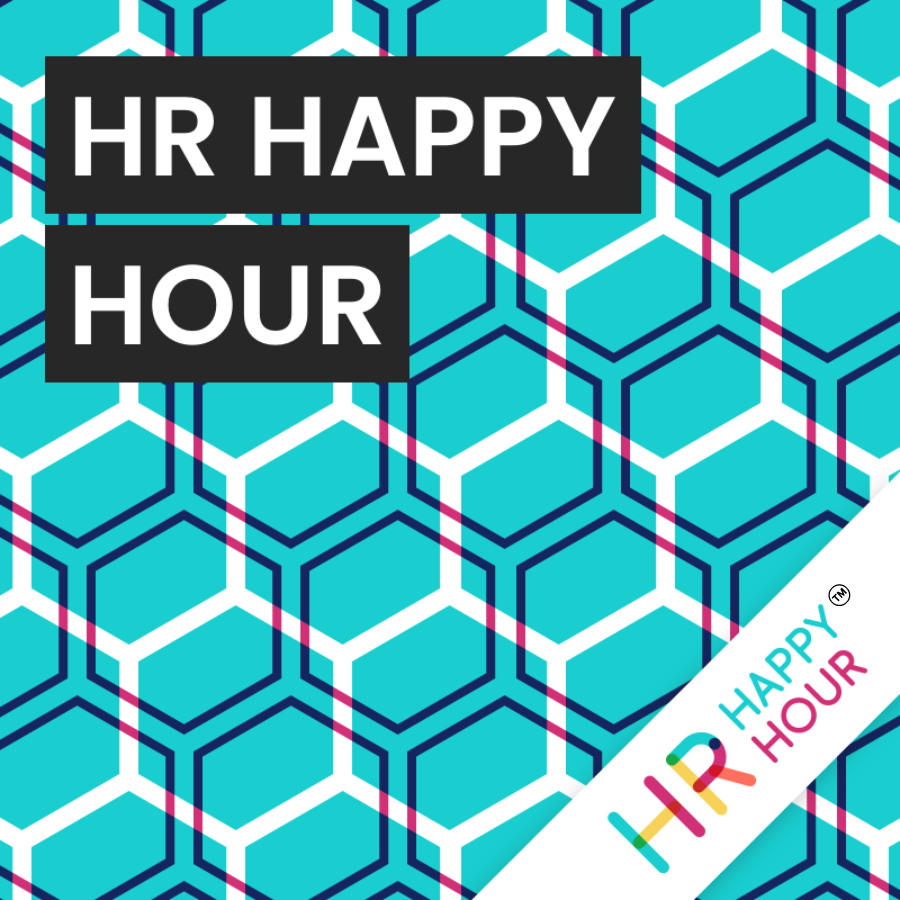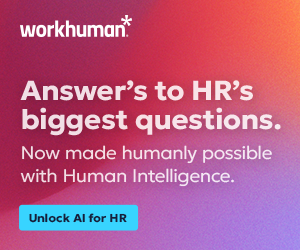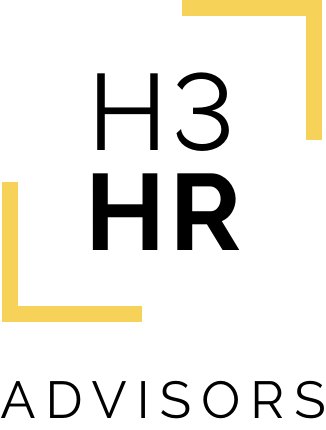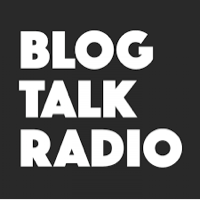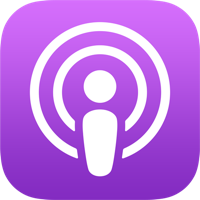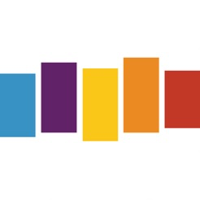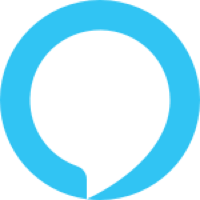Innovation and Customer Success in HCM Technology
Hosted by

Steve Boese
Co-Founder and Chief Data Officer of H3 HR Advisors and Program Chair, HR Technology Conference
About this episode
Innovation and Customer Success in HCM Technology
Host: Steve Boese
Guests: Pragya (Malhotra) Gupta, Chief Product Officer and Geoff Webb, Vice President Solutions, Product, and Marketing Strategy
Today, Steve met with Pragya and Geoff at isolved Connect 2023 to talk about advancements and innovations in HR technology at isolved.
– HR technology innovations and AI impact
– Innovative HR technology and community building
– HR analytics and AI in the workplace
– Company culture, customer experience, and technology
– Improving employee experience and its impact on business outcomes
Thank you for joining the show today! Remember to subscribe wherever you get your podcasts!
Transcript follows:
Steve 0:27
Hi everyone, and welcome to the HR Happy Hour Show. This is Steve Boese and I was recently at the isolved Connect conference in Palm Desert California, where I had the chance to meet with and interview several members of the isolved leadership team, as well as some isolved customers, and we are happy to share those conversations here on the HR Happy Hour media network. On today’s show, you will hear my conversation with Pragya Malhotra, the Chief Product Officer at isolved, who shared news about several recent product innovations, as well as how recent developments in AI are impacting HR technology. Pragya is super intelligent and interesting. And this is a fun and informative conversation. And after that Geoff Webb joined the show. Geoff is the vice president of Solutions product and marketing strategy at isolved. And we discussed some of the important challenges and opportunities for HR and an HR technology moving forward. Geoff is super passionate for HR and for HR success. And I’m sure you’ll appreciate his insights. This was a fun event. Thanks to my friends at isolved for having me. We hope you enjoy the show.
Steve 1:34
We’re back at isolved Connect 2023. And I’m joined by Pragya Gupta, Chief Product Officer at isolved. How are you?
Pragya Malhotra 1:42
I’m doing great. Thank you for having me, Steve.
Steve 1:44
Thank you for being with us. I know you’re super busy here at the event and fresh off your triumphant appearance this morning at this morning’s innovation keynote. Congratulations on that, by the way, maybe we should start there. Certainly any Chief Product Officer loves to get on stage in front of all their customers, right and brag on the team a little bit. And that’s okay, that’s cool. But also talk about some things that are new, and maybe things that are coming, maybe give us for folks who didn’t have the benefit of being out here in Palm Desert this morning. Let’s talk a little bit of maybe the year end product at isolved.
Pragya Malhotra 2:19
Yeah, so I’ve been almost exactly a year now I started at last Connect. It has been a very fun, fun, fun ride. But we are bringing a lot of like cool innovative things to the market. Just this morning, we talked about four things which I’m very excited about. First is our our mobile app. So we you know, everyone would say well, mobile app, isn’t it a bit late in the game. So we had we had multiple mobile apps store. So we’ve now consolidated them into the one that people actually need. It’s based on our adaptive employee experience, the experience that customers use and love today. So we’ve now consolidated them, and they can be downloaded from the store right now.
Steve 2:59
When you when you made that announcement this morning, there was like a cheer. Lots of folks raising up their phones to scan the QR codes and immediately download the app. So congrats on that’s a big thing.
Pragya Malhotra 3:12
Yeah, it is because we had quite a few apps, which did kind of a part of the full functionality. So it’s always good to have one consolidative cohesive experience and, and our experience on the on the web is something that you know, our customers, our users love. So to be able to bring that on a mobile store choice is really good. So excited about that.
Steve 3:32
That was a big moment this morning. Yeah, yeah. So what else stands out to you like, Okay, this is really cool, too. Absolutely.
Pragya Malhotra 3:39
Yeah. And, you know, I saw we believe a lot in developing a community. When community of our people, heroes that are at us, you see these People Hero mascots, walking around the floors, but but the idea behind that is that we want to empower we want to help the people who are our admins, day to day in the trenches, who are so busy with what they do, they’re, you know, like HR, you talk to them, they’re not even able to sometimes take vacation take time off. You know.
Steve 4:08
Burnout amongst HR people is a very real thing.
Pragya Malhotra 4:11
It is a very real thing. So we want to empower them, we want to enable them and for that, two years ago, we launched people heroes, community, and community is about fellow fellow collaborators coming together helping each other you know, we have about 2700 users who log into the community every day, about 1000 net new posts had been made in the community this year, which is really people asking others for help right it’s a cry for help and that’s amazing. And then last year, we launched people heroes University, which is those people heroes learning new programs, you know, those could be general HR administration, payroll compliance, or how to make best use of high salt. So now we are coming up with combined people, heroes University and people heroes community, and we’ve launched people heroes world, which is engaging, exciting challenges that is gamified by taking these challenges, you know, our people heroes can be earning swag in our in our people hero store. So it has taken a life of its own. And it is so empowering, feel so special to see these people feeling that some finally someone has a passion for them, right?
Steve 5:17
Well, these are nice, that’s a great thing because these these tools are such an important part right of these organizations. And part of that, look, if you’re an HR person or benefits person, a payroll person and you’re relying on your technology, you’re using it every single day, right? You want to optimize its use, you want to get the most out of it, you do feel that kinship right to other organizations who are using the same tools, both you want to learn from them. But you also want to help too. And imagine you’re seeing a lot of that behavior.
Pragya Malhotra 5:47
Another thing that we talked about this morning is our overall our analytics offerings, we called it I saw analytics everywhere. And the reason we say it’s everywhere is because when we think of analytics, we think of like, the whole spectrum of how do we empower our administrators, our CHROS are leaders who are using the product to say, Okay, this is my one stop shop, this is what will enable me to retain my talent, this will enable me to hire my talent quickly, this will enable me to talk to the leaders, the CEOs, or the owners of the business and say, I have made a sizable enhancement to my day to day by using this product. So when we think of that we recollect to call it like a layered cake where people I saw people cloud is our core platform. On top of that, then we have our predictive People Analytics, which is extensive reports, graphs, being able to really understand the insights, the data, you can also marry up external data sources. We also have language or natural language processing capabilities on the platform. We’ve added predictive guidance, which is more like statistical modeling, you know, if I was to say increase the salary of these number of people by 10 person, what kind of lift would that business so there’s a lot of statistical modeling around predictive guidance. On top of that, we have benchmark insights, which is to be able to say, Okay, we have 168,000 customers taking the data from.
Steve 7:14
Say that again Pragya, a little more slowly.
Pragya Malhotra 7:16
168,000 customers a remarkably high number. And it is such a treasure trove of data. Because we have 6.9 million employees, and we anonymize the data of the 6.9 million employees bring this data together, and then use that data for benchmarking salary tenure, turnover. And on top of this layered cake, then we have in context insight. So these are embedded in like insights, right? In the flow of work, you are using the compensation module insights, right in the flow of work.
Steve 7:49
So for managers trying to decide about a merit increase, or a bonus, right like that, actually get a little data, get some insights around the impact, there may be where that person sits their history of pay all that without leaving the flow of super important, right. And that’s the kind of quite frankly, is that example specifically, but others as well, that’s the kind of capability that had typically been kind of enterprise level, all right, big, big, expensive systems and big companies had access to, maybe less so the smaller organizations.
Pragya Malhotra 8:22
That’s what customers love about it, because, you know, they now have availability of the stack that was only for the elite like elite of our segments, right. And then last thing are the last two things I would add is our KPI, dashboards, which is just key performance indicators like generational mix, gender mix, or headcount trends. And we are about to launch this ROI dashboards, which is based on we were taking benchmarks from like American Payroll Association says if you are we’ve added formulas, statistical formulas, mathematical formulas to these reports, which then enable an HR leader to illustrate the kind of savings that their HCM platform and their investment in the HCM staff is yielding for the organization, right, because any CHRO you talk to, they want to go into the meeting with the CEO, and be able to talk in numbers be able to talk about the difference they’ve made in the business and ROI dashboard that enabled them to do that your program.
Steve 9:21
So glad you brought that one up specifically, right? Because that’s been a challenge in the HR space and in the HR technology space for ever, right? Having to make those difficult arguments often right to see those are CEOs, CFOs you name the person right about justifying something that I’m justifying, but just trying to get support for additional investments in people and then people technology. Yeah, and now you’re providing tools that say, Hey, we can help you make those arguments and not just make the arguments but also over time, sort of elevate the value of HR as well.
Pragya Malhotra 9:55
Absolutely. Yeah, absolutely. And then the last thing I would say is AI is like, everyone’s thinking about it. And everyone’s talking about it too at this point in time and, and for the, as you know, with with large language models with Chad GPT, in my view AI has is becoming a commodity. Prior to these large language models and open ai, ai was only available to the companies that could afford data scientists and you know, now it’s available to anyone and everyone. And for an IT has enabled us in the SMB and mid market space to bring it to the masses. So in our product, this morning, at the stage keynote, we talked about, we are building an AI based job description authoring tool, we are building AI based candidate badging, which essentially helps organizations filter the best candidates and and bubble them up to the top, you know, you post a job, you get 1000s of resumes, in SMB and mid market, they don’t have so many recruiters just floating around who are just not there.
Steve 11:01
Just not there to review profiles like that, you know, exactly.
Pragya Malhotra 11:04
So, to be able to match the, the candidate based on their skills, and then skills of the job, get my five candidates, you know, and then go interview them, instead of now sifting through 1000 resumes. We also talked about AI based chat assistance. So, you know, HR service delivery, right in the flow of work, which essentially is, you know, I have been in this space for so long, and you know, I still get trumped with benefits questions. I anytime you know, then the open enrollment window opens up and I’m like, Oh, what was the benefit deductible again? What do I have to choose to be able to ask that type of question and get the answers from an employee handbook or a Benefits Guide or a travel policy document? Because we have a, we have LM models around. It’s powerful. So that is something that we will be launching early next year as well.
Steve 11:59
Yeah, probably thank you for that. That’s a really concise, you did like a three and a half minute summary of like, you know, 15 minute keynote this morning. But you eloquently described many of the enhancements that are coming. And really the theme, and I’ve heard this all day, I saw it this morning, I’ve heard this all day is like, wow, this is like enterprise level stuff that’s available now really, literally to any type of customer, which was one of the promises we always talked about in cloud computing, right. And distributed computing and the ability for anyone to access these tools. Because in the past we could it right, it was they were expensive. You needed IT staff, perhaps internally, which many of these organizations still have, right. Yeah. So I love that. Probably one of the things I’d like to maybe end with is you mentioned you’ve been in the industry for a while work to other organizations. And I want to talk about other organizations specifically. But I’d love for you to talk a little bit about what’s maybe different, unique special, your year here at isolved. Right. And so maybe talk a little bit about the how the culture at I saw the people that I solve kind of how how that experience reflects in customer experience, things like the community things about how you think about development and serving the customers. I’d love for you to talk about what your life at I saw this, like, I’ll ask it that way.
Pragya Malhotra 13:21
That’s a great question. You know, as I, as you mentioned, I came to I saw the year ago, and what I felt that day when I joined, or, you know, through the process of getting to know I saw, and now is the same. And what I mean by that is, there is this theme that runs across every individual that you every employee that you work with that I saw, how can I help? Right? How can I help? How can I be the best version of myself to enable you to become the best version of yourself? And that love resonates with every employee? And I always think of this back to the layered cake maybe and I’m talking a lot about cake. That’s saying something.
Steve 14:00
I do think you like your sweets. We sat near each other at dinner the other night. But yeah,
Pragya Malhotra 14:08
You know, I feel like you know, if you’re, if you take care of the employees, employees take care of each other, that resonates. And then those employees, they are happy, they want to take care of the customers, once you take care of the customers, customers take care of the bottom line, the business, the stakeholders, the profit, the everything. So it’s that it’s that pyramid, that you know, it is the ethos of this organization. And I feel that is a big, big, big value, big, big, big differentiator for us. And I do not see that in a lot of organizations in the space.
Steve 14:41
Now you don’t thank you probably for sharing that. You don’t see it in all of them. That’s for sure. Particularly in the tech industry, which has been known to be a little cutthroat, right? Some of the cultures are different, right? They’re very competitive, maybe and not that I stopped, doesn’t want to succeed and compete well and Be in the market. And actually, I think it’s almost underrated how well I solved is competing in the market, because in a way you guys don’t shout that, right. You talk about other things, right about community and about support and about experience, which is very refreshing. But it’s interesting to know. And I think it’s an important thing for folks that get a lot of questions from people, whether at events, or people listen to these shows about, hey, what software is best for this, or what software is best for that. And, you know, whether it’s payroll or benefits or performance or talent, and it’s hard to answer that. But I do say like, just be careful, because a lot of the software is good, many of the offerings out in the market are very good, and they’re all getting better, maybe, but you need to think about things like the culture of the organization, that’s going to be your partner. Yeah, their, their, their approach to things like support their approach to how they treat their own employees. Right. And, and because of the relationship you’re entering with a, with a provider of these really important technologies, it’s more than just buttons and functionalities, at least in my opinion.
Pragya Malhotra 16:00
100%, I think service is, is what you know, I always think of it as culture, service and product, right? If your culture is great, your service, if your internal culture is great, your service will be fantastic. And then if your product is great, it all comes together and makes it the best vendor for your customer.
Steve 16:20
I think that’s a great way to sum it up properly. Thank you so much for spending a few minutes with us today, you are running around like a crazy person here a lot of demands on your time. So we do really appreciate you taking a little bit of time to spend with us and our audience today. So thank you so much. And congratulations on one year, and have a great rest of the event.
Pragya Malhotra 16:37
Thank you. Thank you for having me.
Steve 16:40
Thank you so much Pragya. All right. That’s it. For now, for isolved. Connect. My name is Steve Boese. This has been the HR Happy Hour Show. Thank you so much for listening. And thanks. That was really great fun. Thanks again to Pragya for joining me. Next up, let’s talk to Geoff Webb. Here’s my conversation with Geoff.
Steve 16:58
We’re back from isolved Connect in Palm Desert, California. And I’m joined by Geoff Webb is the VP of solution strategy here at isolved. Geoff, how are you?
Geoff Webb 17:07
I’m doing well. Yeah, I’m having a great day here so far. And it’s been really exciting.
Steve 17:12
It’s a wonderful day, and I’m gonna tell you something, I’ll congratulate you on behalf of the entire team, because you’re sitting right next to me. But what an amazing event so far. Yeah. What I’m hearing is record setting attendance. Yes, again, absolutely. Lots of enthusiasm. So maybe just tell us a little bit about kind of your impression so far of Connect, and maybe just thinking about kind of the things you’re hearing. What are people talking about?
Geoff Webb 17:35
Yeah, absolutely. I mean, first of all, I would say absolutely record setting attendance, again, which has been great, huge amount of energy. You know, everyone’s really, really pumped, everyone’s very positive. There’s an awful lot of excitement and interest around how technology can really free HR folks to focus on the stuff that really matters. And I think that’s been a lot of the conversations I’ve been having is, you know, how do we use technology to get back to the things that we care about looking after people doing the things that we’re uniquely capable of doing?
Steve 18:04
I’m glad you said that, Geoff, and I apologize to listeners, I don’t know the exact order. And all these interviews are going to run. But I do know, I’ve recorded a couple interviews today with customer, two different customers who both said more or less that same thing, just like their experiences back in their organizations, both their experiences so far, and what they’re expecting to happen in 2024. Is that, that freeing up of their teams to spend more time on those really important personal connections with employees. Yeah, absolutely.
Geoff Webb 18:33
And that’s really the promise of technology. When it comes down to it. It isn’t just about, you know, improving process or streamlining things, or reducing errors. Those are all really important things that technology can do. But fundamentally, in this world, what technology lets us do is it frees us up to go be human, it frees up to go focus on the human aspects. And that connects directly to all the things that businesses care about.
Steve 18:56
And we’ve been promising that as technologists. Yeah, I’ve been in the technology space a long time, a few years as well, I think I feel like we’ve been making that promise for a while. But we didn’t really have the tools to maybe make that promise come to life, right, particularly in, you know, installed software days and patching days, and you needed more technical expertise in house, then you really do today. Because today now even small businesses, right can access these amazingly powerful tools they run in the cloud provider, like AWS solved can manage all the security in the access and the downtime and the fixing and all that but but it’s an important thing, because a lot of organizations still haven’t quite gotten there yet. And they have they do have the opportunity.
Geoff Webb 19:41
They do absolutely. I mean, you’re 100% right, that, you know, the delivery mechanism of cloud has unlocked the capacity for any organization to get access to the most sophisticated technology and for that technology to continue to evolve in real time. Yeah, you add to that, the power that we’re starting to see in and I you know, and I hesitate to use the phrase but I artificial intelligence, machine learning, building those into simply make the technology smarter, more adaptable, more responsive. You combine those things together. And what you’ve got now is we were finally able to deliver the tools to get the job done. And the job in this case is to free up HR people to focus on the people that they look after.
Steve 20:20
I’d encourage folks who are listening to this to not just take Geoff’s word for it, or my word shirt, right? Listen to some of the interviews we’re doing here at isolved with some of the customers, right, I sat down with a customer, a small community, group, a credit union, small employer in the Midwest, and literally accessing these new tools to free up people to to reduce their time to hire from something like 60-65 days down to 20. Yeah, right. And largely from eliminating manual administrative processes happening today in 2023.
Geoff Webb 20:53
Yeah, oh, there’s still improvement, there’s a long way to go. We still can improve an awful lot of things. But what we also see, by the way, and the other aspect of this, of the conversations, is this, this clear understanding of the return on investment for employee experience. So what’s happening is you’ve got HR teams able to focus more on delivering a better employee experience, because they’ve got more time, better information, that employee experience and starts to translate into all the other things that the business cares about. So you’ve got a direct connection, and we’re seeing it in the surveys to do in the studies that we do, and in the conversations we have between improving the employee experience and delivering a better customer experience.
Steve 21:29
I’m glad you mentioned that, Geoff, because I know I saw just released some new research. Yes, Voice of the workforce research. I encourage folks to go to the Eisav website and check it out. We’ll put a link in the show notes. But you got a couple of I don’t know, highlights for me on that. And just things that you guys have found that can kind of help. I don’t think it’s justify investments is the right word, but help help HR people make the case. Right. That’s the employee experience.
Geoff Webb 21:54
Yeah, absolutely. I think the couple of things I would see is on the sort of the slightly negative side, really, you know, there’s still a lot of room for improvement when it comes to connecting and engaging employees. So we still see there’s an awful lot of employees thinking, Maybe I should be thinking about something else. Next year, maybe I can be reassessing my, my place in the workforce, that obviously means that there’s room for improvement, there’s still more that we can do around improving employee experience. However, there was a, you know, a very, very high correlation between that better employee experience and customer experiences, way over 90% of employees are saying, you know, what, when we have a better experience, we can look after customers. Yeah. And I think you start to combine those things together, how can I stabilize and build a resilient agile workforce that’s going to stay with me, because when they’re happier, my customers are happier. Now you see the how HR is moving from being the sort of operational function to being something that’s really quite a business strategy. And that is a really interesting development.
Steve 22:54
Yeah. And that’s through line between investments in people investments in people technology, right, and actual goes direct bottom line, top line and bottom line business. It’s becoming more clear, and we’re able to measure it a little bit better, I think
Geoff Webb 23:08
We are, absolutely. And actually, that’s one of the things we’re also doing is you know, as the platform’s become more intelligent, we’re able to start to really look at the operational, financial and ultimately business impacts of just improving HR processes, and therefore enabling HR professionals to go have those conversations. Look, if I do this, I can, I can one hand save you money the other hand, I can also build a better workforce, I can deliver a better customer experience. And connecting those things together means again, employee experience becomes really, really central to actually the strategy for building a good business.
Steve 23:41
Yeah, and one of the other things that’s interesting to me, what I’ve learned so far today, and really been falling isolved for the last few years is the growth of isolved has allowed you to provide customers even more value added when it comes specifically in terms of gaining insights from the data. Yes, right. Because because the the volume of customers goes up, the number of employees on the platform goes up, all of a sudden, now we understand things that are happening in compensation, we understand things that are happening in employee movement, we understand benchmarks can now be much more meaningful. And you guys are starting to tap into that and provide value to the customers. I’d love for you maybe to comment about that.
Geoff Webb 24:20
Yeah, that’s really one of the I’m really passionate about this. It’s one of the great things we’ve been able to do. We touch the lives of, you know, roughly about 7 million employees across the US every day. It means that we have an incredible amount of insight, we have a real window into what’s happening into the US workforce. As a result, we’re able to start to aggregate that information, look for trends and then present that back to those HR teams. So in other words, I’m curious how you know, I don’t know I’m a bank. Okay, let’s look at what what’s the retention rate for bank tellers like my bank in this state? Am I doing better? Am I doing worse? Now let’s look at things like compensation. Are we compensating more or less? What are the connection between those Think so the ability to start to say, well, not only do I have really good insight into what’s happening in my organization, which we’ve already been building in for a while, but now how do I stack up against other similar organizations, which, of course, lets me not only build a better strategy, but again, critically enables the HR team to then go to their senior stakeholders and go, Look, you know, there’s something here we need to change. And we got the data to show it. And that’s really empowering.
Steve 25:24
Yeah, that’s great stuff, Geoff. And I’m glad you’re doing that. And that is also one of the promises, right? We thought about with cloud computing. Yeah, a number of years ago, we thought, oh, we’ll have all this data, it’ll be in the cloud. And providers, if they’re able, if they’re, if they’re smart, will be able to help us understand more about our own data by comparing it to some of this aggregate data. But that’s been slow in coming, I think, largely, and certainly for small, medium sized businesses. So it’s really encouraging that that almost any business really will be able to tap into these insights.
Geoff Webb 25:56
That’s been really one of the fun things is enabling small to medium business to have that now they have the same capacity to do analysis of how they stack up that larger organizations would have had in the past with really big budgets to bring in new data. We already were presenting that to them.
Steve 26:11
It’s really interesting stuff that keynote was really compelling. This morning, we were looking at some of the things that are that are, have been developed in 2023. And are coming in 2004. Yeah. But, Geoff, I’m not allowed to be an HR technology type conference, right now in this in this period in our lives and not talk about AI just a little Yeah, I have to ask you about it. And I’ve talked to some customers about it as well. Their responses are really interesting and encouraging, quite frankly. But I’d love for you just maybe generally speaking your strategy guy, how are you guys thinking about AI as part of the the people cloud and what that might mean for customers?
Geoff Webb 26:48
Absolutely. You know, I think it really is sort of three buckets of innovation. Okay. The first is AI that’s built into the sort of operational flow of work things like how can I use AI to reduce errors? How can I use use AI to look for trends that I need to know about? How can I use AI to create content, for example, okay, so stuff that sort of operational day to day sort of AI can add value and improve intelligence, their second bucket is that area around personalization, I can connect all of that power to people in the organization in a much more personal way. So in other words, identifying a career path, not just for someone who’s kind of like that, but for that individual, let’s identify the right, that’s really, really important. Let’s build a training path for them to develop as an as a person, let’s find information for them that they might need before they even ask for it. So that’s the second area is really connecting to personalization. And then the third bucket of innovation around AI is simply to do with engagement and communication. Okay? It’s incredibly powerful to be able to say things like, I can just use natural language to ask a question. And all of the things I just talked about, then go online and will deliver information will deliver answers to me will initiate workflows and so on. So communication through natural language through the availability of chatbots, anywhere and any time of day, to get connect to a personalized experience, which ultimately is fueled by highly intelligent back end systems and workflows. That transforms the experience of HR, it transforms experience of employees, and it ultimately reshapes the way that businesses are going to be connecting technology to the day to day operation of their organization.
Steve 28:27
Geoff, thank you for that, that was a one of the most clear and concise explanation, the impact AI is going to have on the HR space I’ve heard, honestly, all year. So thank you for that we’ll probably steal a lot of that. But, but it also gets back to something we talked about a few minutes ago, which is allowing the HR community, the payroll community, the benefits committee, whoever it may be, to really engage with people at a level with, you know, personal level, that human touch, and all of that, right, because these things are hard, right. And once an organization’s scale made, it becomes very difficult for HR and payroll professionals, and even people leaders honestly to have a real good connection with people individually. So let’s use these technologies to deliver personalized experiences to help people solve their problems for themselves more quickly, and then again, those really important things, those coaching moments, those development moments, those brainstorming moments, right, where people are really needing to have that human to human connectivity, let’s create an enable space for those. And I think that’s what we’re largely talking about, right?
Geoff Webb 29:29
Absolutely, talking about that. And I think, you know, when I talk about the power of AI in this space, and I talk to HR professionals about it, and in many cases, we’re sort of demystifying and almost de threatening the power of the technology. The thing I always stress is, look, AI is really, really good at certain things. There are things that just you know, the building a model and having it be able to self adapt, and things that sort of define AI are really really good at what AI is not good at is is empathy, you know, understanding and I say you know, I say the sample would be a I never will understand what it’s like to be a single parent on the latest school whose car just breaks down and a surprising medical bill, you as a person can understand that, yeah, and context, what’s going on in the broader world, what’s going on around that person. And it’s not good at those things. It’s really good at other things, but it’s not good at those. But those things are definitionally. Human, they are what we are perfect to do. We are context and empathy machines. And so you pair the power of the sort of analytics and process around AI, with the capacity for context and empathy that human beings bring to the table. That is really powerful. And that’s how we should be thinking about AI is, is let it do the things it’s good at, to free us up to do the things that we as human beings are uniquely good at.
Steve 30:44
Geoff, I love that I’m gonna get to hit you with one real quick one. You can give me a short answer or a longer one. It’s up to you. It’s one of my favorite questions, especially for strategy people. Okay, here it is. Does culture really eat strategy for breakfast?
Geoff Webb 30:57
Oh, my goodness.
Steve 30:58
I know my answer. I think I’ll tell you, my answer is no. But go ahead.
Geoff Webb 31:02
I’m gonna say You know what, I think if your strategy doesn’t, isn’t shaped around building the culture that’s ultimately going to deliver what you need to deliver, then you’re building the wrong strategy.
Steve 31:13
I love it. I love it. I’m a strategy guy, too. So I appreciate the answer. That was the trick question. At the end, I sprung on you, Geoff. I appreciate you for taking it on. Geoff, great to see you so much for sharing. I’m stealing half of what you said. I’m gonna I’m gonna claim I wrote it and said it, but don’t don’t mind that. I stole it from you first. This has been so much fun. That was Geoff Webb from isolved. We’ll be back with a couple more interviews from isolved Connect. And thanks so much for joining us, Geoff. We’ll see you in a bit.
Geoff Webb 31:43
So thank you. Thanks a lot.
Transcribed by https://otter.ai
Talk to us
If you want to know more about any aspect of HR Happy Hour Media Network, or if you want to find out more about a show topic, then get in touch.

